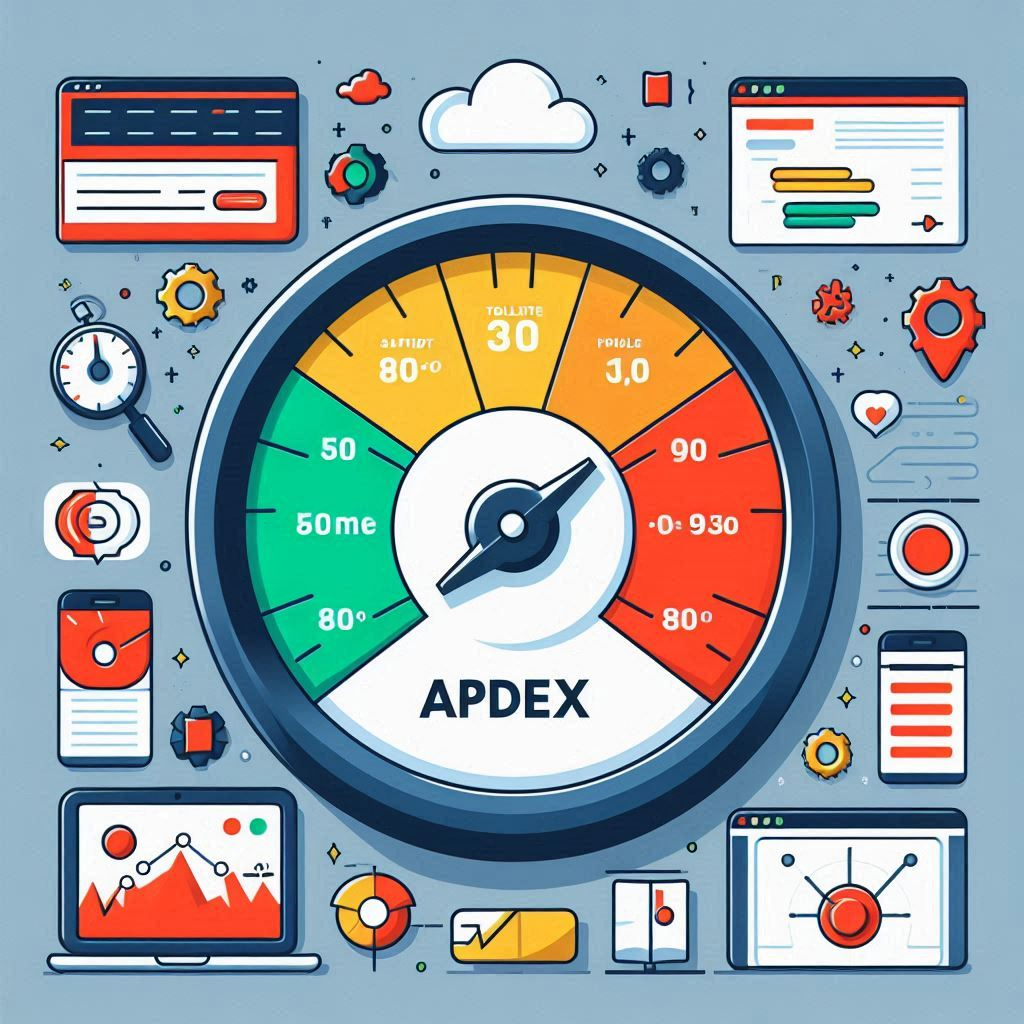APM Tools: Understanding the Application Performance Index (Apdex)
Introduction
Application Performance Monitoring (APM) tools play a crucial role in assessing application performance and ensuring optimal user experience. One widely used metric in APM tools is the Application Performance Index (Apdex). Apdex is a standardized measurement that simplifies performance monitoring by providing a single score that reflects user satisfaction based on response times. This score, ranging from 0 to 1, helps organizations understand how well their applications meet user expectations. By leveraging APM tools and Apdex, businesses can proactively address performance issues, enhance user experience, and optimize their applications for better engagement.
Understanding Apdex
Apdex is built on the principle that user satisfaction is directly linked to application responsiveness. It categorizes user interactions into three groups based on response times:
-Satisfied (S): Users experience acceptable performance, typically defined as responses that meet or exceed a predefined threshold (T).
-Tolerating (T): Users experience performance that is acceptable but not ideal, falling within a range that is longer than T but shorter than a second threshold (4T).
-Frustrated (F): Users experience unacceptable performance, with response times exceeding the 4T threshold.
Apdex Calculation Formula
The Apdex score is calculated as follows:
Apdex = (S + (T/2)) / (S + T + F)
Where:
- S = Number of satisfied users
- T = Number of tolerating users
- F = Number of frustrated users
This formula ensures that while tolerating users contribute to the score, they do not hold the same weight as fully satisfied users. APM tools help track these categories and calculate Apdex, offering insights into application health.
Setting the Right Thresholds
The effectiveness of Apdex depends on selecting an appropriate threshold (T). This varies across industries and applications:
1. A standard web application may have a T of 200 milliseconds.
2. A financial trading platform may require a T of 50 milliseconds for real-time transactions.
Organizations using APM tools should analyze historical performance data, gather user feedback, and compare industry benchmarks to determine optimal thresholds. Regular review and adjustments are necessary to maintain accuracy as user expectations evolve.
Benefits of Apdex and APM Tools
1. Simplified Reporting: Apdex provides a straightforward metric that can be easily communicated to stakeholders, including non-technical audiences. This helps bridge the gap between technical performance and user experience.
2. Focus on User Experience: By concentrating on user satisfaction rather than raw performance metrics, Apdex encourages development teams to prioritize enhancements that directly impact users.
3. Benchmarking and Comparison: Organizations can use Apdex scores to benchmark their applications against competitors or industry standards, providing insights into areas needing improvement.
4. Actionable Insights: The Apdex score can help identify performance issues and prioritize them based on their impact on user satisfaction. This allows teams to focus their efforts on the most critical areas.
5. Alignment with Business Goals: By correlating application performance with user satisfaction, Apdex aligns technical performance with business objectives, making it easier to justify investments in performance improvements.
Implementing Apdex with APM Tools
To effectively implement Apdex, organizations should follow a structured approach:
1. Define User Expectations: Engage with users to understand their performance expectations and define the appropriate T threshold.
2. Collect Performance Data: Utilize application performance monitoring (APM) tools to gather data on response times and categorize user interactions into satisfied, tolerating, and frustrated.
3. Calculate Apdex Scores: Use the collected data to calculate Apdex scores regularly, ensuring that the results are easily accessible to stakeholders.
4. Analyze and Act: Review Apdex scores in conjunction with other performance metrics to identify trends, issues, and opportunities for improvement. Develop action plans to address areas where user satisfaction is lacking.
5. Communicate Results: Share Apdex scores and insights with stakeholders to foster a culture of performance awareness and user-centric development.
Challenges and Considerations
While Apdex is a powerful tool for measuring user satisfaction, it is not without its challenges. Some considerations include:
Subjectivity of User Experience: User satisfaction is inherently subjective, and different users may have varying expectations. Apdex provides a generalized view that may not capture the nuances of individual user experiences.
Threshold Sensitivity: The choice of T can significantly impact Apdex scores. Organizations must be cautious in setting and adjusting this threshold to avoid misrepresenting user satisfaction.
Limited Context: Apdex does not pinpoint specific performance issues. It should be used alongside APM tools that provide deeper diagnostic capabilities.
Potential for Misleading Scores: If not implemented correctly, Apdex scores can be misleading. For instance, if a large number of users are frustrated but the number of satisfied users is high, the Apdex score may still appear favorable, masking underlying issues.
Conclusion
APM tools are essential for maintaining application performance, and Apdex serves as a critical metric for assessing user satisfaction. By simplifying complex performance data into a single score, Apdex helps teams focus on what matters most—the user experience.
To fully leverage Apdex, organizations must set the right thresholds, consistently analyze performance data, and combine Apdex insights with other APM tools. With Application Live View and the Application Performance Index (Apdex), teams can proactively monitor applications, optimize response times, and ensure seamless user experiences.
As technology and user expectations evolve, Apdex remains a powerful tool for performance monitoring, enabling businesses to align technical optimizations with user satisfaction and business goals.
Do you like to read more educational content? Read our blogs at Cloudastra Technologies or contact us for business enquiry at Cloudastra Contact Us.
